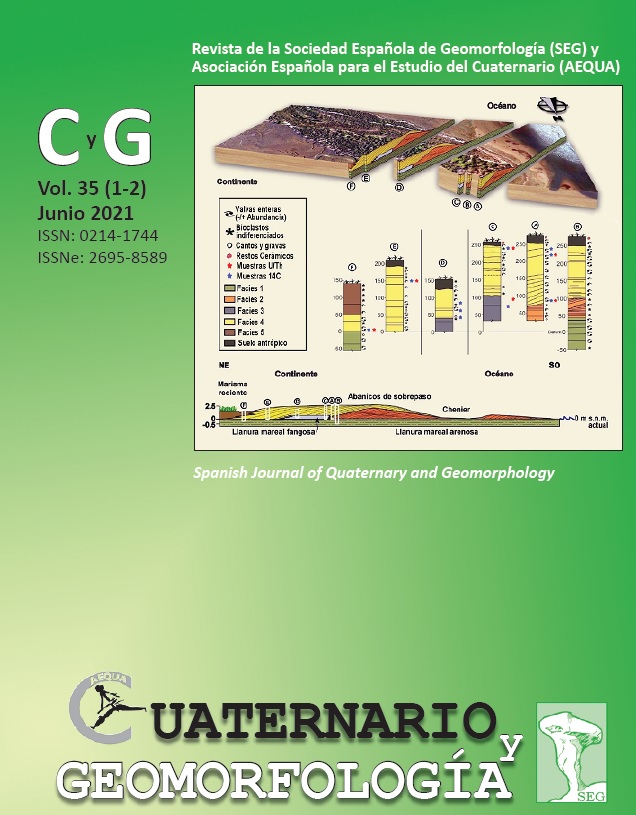Inicio del poblamiento prehistórico en la isla de Bioko (Guinea Ecuatorial)
DOI:
https://doi.org/10.17735/cyg.v35i1-2.89474Resumen
El inicio del poblamiento humano en la isla de Bioko (antigua Fernando Poo) (Guinea Ecuatorial) es un tema mal conocido. Investigaciones previas establecen una secuencia de ocupación exclusivamente Holocena a pesar de que Bioko ha estado conectada con el continente durante el último periodo glacial. Con objeto de localizar evidencias de ocupación Pleistocena se georeferenciaron 44 puntos/afloramientos, distinguiéndose sedimentos volcánicos y materiales volcano-sedimentarios eluviales y aluviales. Entre estos cabe destacar el hallazgo de una larga serie de sedimentos lacustres correspondientes a un paleolago ubicado en un cráter. A pesar de lo exhaustivo de las prospecciones no se halló ninguna evidencia de presencia humana atribuible a una cronología pleistocena. Nuestros resultados confirman una ocupación muy tardía de Bioko posterior a los 8000 años BP. La ausencia de ocupaciones previas podría obedecer a condiciones ecológicas hostiles (pluviosidad, parasitismo), aunque es posible que las ocupaciones pleistocenas estuvieran restringidas a las zonas costeras y que estas se encuentren hoy sumergidas.


